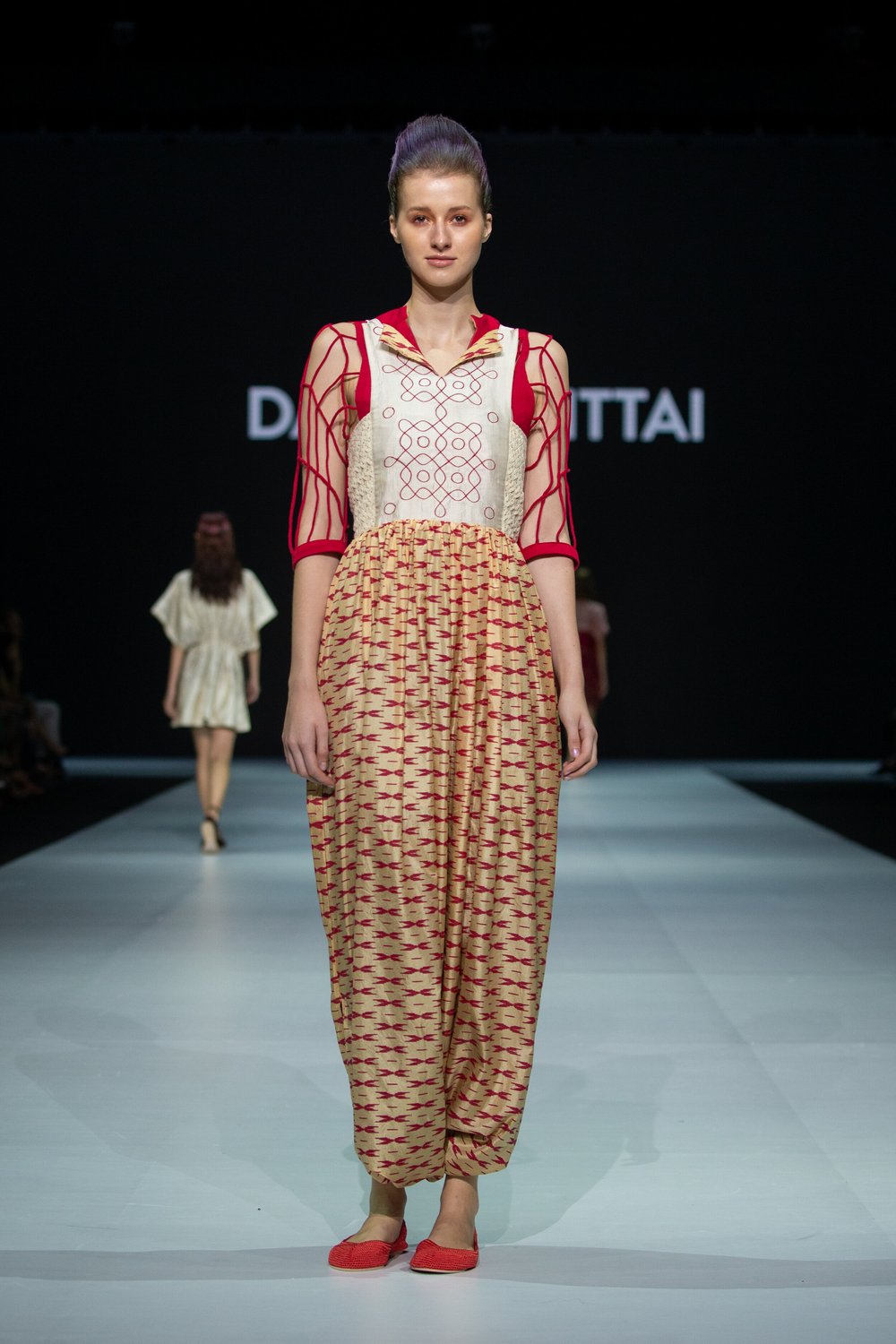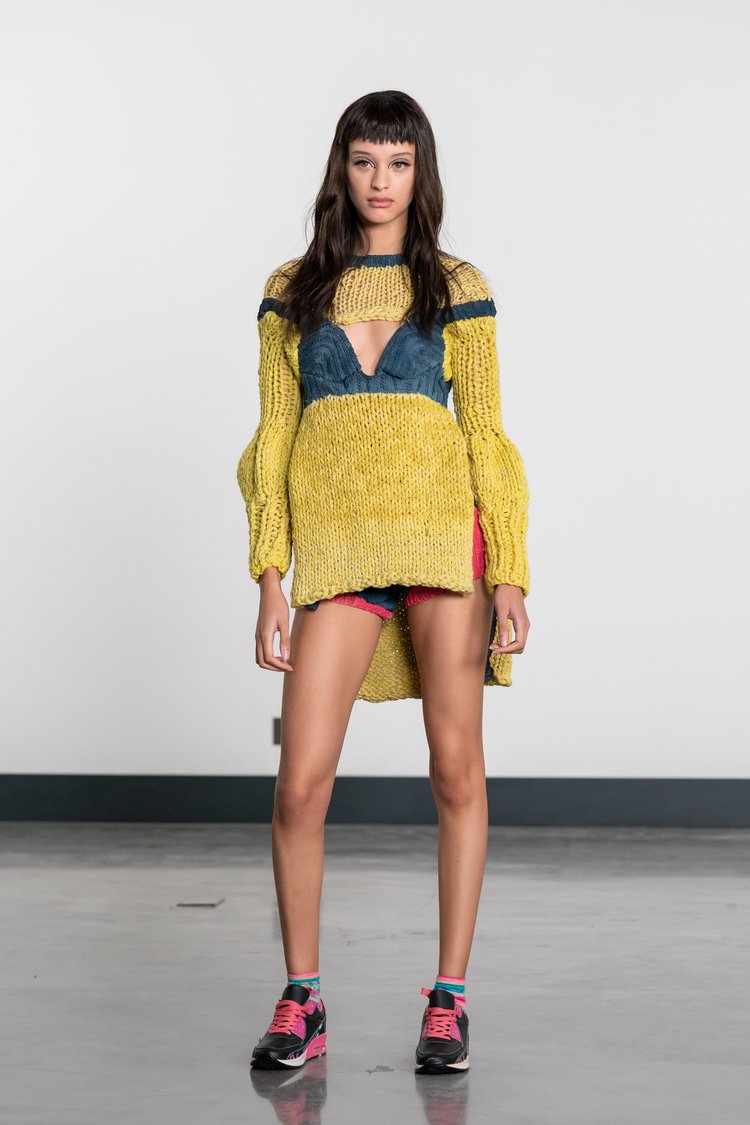Zero-waste Guide
Zero-waste Guide
Created by Redress

WhAt is it?
Zero-waste is a design technique that eliminates textile waste at the design stage.
WhY do it?
Approximately 15% of textiles intended for clothing ends up on the cutting room floor. [1] When textiles are wasted, so too are the resources which were invested and embedded into the textiles. It is vital to address the source of the problem by maximising the use of textile materials and by minimising the wastage. Adopting a zero-waste design approach reduces textile waste and the demand on natural resources.
HoW to do it?
1 First, decide
There are various approaches to making a zero-waste garment. The one rule is that there should be no wastage. So first, decide what type of garment you wish to make and which zero-waste technique to use (for example zero-waste pattern, draping or knitting), as these will inform your design and sourcing options.
While some designers understand ‘zero-waste’ as reusing the scraps or yarn leftovers they generate to make other new products, ‘zero-waste’ in the strictest sense is creating a product that utilises the entire amount of material without any scraps or leftovers to create ONE product only.
ZERO-WASTE PATTERN
This technique relies on creative pattern cutting: pattern pieces are placed in a jigsaw-like arrangement to utilise 100% of the fabric.
Download the pattern

Image credit: Le Ngoc Ha Thu, Redress | 3D design simulation credit: Queenie Cheng
Le Ngoc Ha Thu, Redress Design Award 2020 winner, created this shirt by deconstructing a yukata and developing a zero-waste pattern to utilise the pieces of fabric and make this shirt.
ZERO-WASTE DRAPING
Similar to the zero-waste pattern, this technique relies on creative utilisation of 100% of the fabric, this time by draping fabrics directly over a body or a mannequin.

Image credit: Redress
Damini Mittai, Redress Design Award Alumna, created this maxi skirt using the zero-waste draping technique.
KNITTING (AND CROCHET): FULLY FASHIONED AND WHOLE GARMENT
This method relies on knitting or crocheting products to the exact shape and measurements of the final product. The fully fashioned technique is to knit (or crochet) flat panels to the correct pattern shape to then assemble them. Whole Garment knitting (also called 3D knitting) is to knit the entire product without the need for panel assembly.


Image credit: Laura Krause, Redress
Laura Krause, Redress Design Award Alumna, knitted this dress by hand to the exact measurements of the model, without the need for cut-and-sew or panel assembly.
Expert Tip
Timo Rissanen, Co-Author of Zero Waste Fashion Design (Bloomsbury, 2015) and several other publications, and Associate Professor, Fashion and Textiles at the University of Technology Sydney
When I first started with zero-waste design I worked in a way that I had always worked, which was to sketch things and then move onto the pattern-cutting phase. But I changed my approach to zero-waste design when I realised that keeping an open mind regarding the final outcome, with the same goal of making beautiful garments, allowed me to explore and invent new outcomes.
2 Then design & source
The zero-waste design technique is an integrated design process, where designing and sourcing go hand in hand. This means that you need to know your textile dimensions to be able to design your garment; and likewise you need to know your design dimensions to source your textile. Knowing both this information is vital, as you do not want to limit your design by having to work with set textile dimensions, as this can often lead to creating unnecessary embellishments and compromise your design. Creating a zero-waste garment is about minimising wastage, so when you source, find the textile that will work for your design.
Expert Tip
Timo Rissanen, Co-Author of Zero Waste Fashion Design (Bloomsbury, 2015) and several other publications, and Associate Professor, Fashion and Textiles at the University of Technology Sydney
The textile width is always a crucial consideration in zero-waste design. You can’t design zero- waste without knowing exactly how wide the textile is. The textile width is the space within which you create zero-waste fashion design.
3 Finally... make!
This is where your sketching and pattern will be tested. Whether you drape, knit or use a zero-waste pattern, the important thing is that the whole textile is used and that there is no wastage.
Expert Tip
Johanna Ho, Fashion designer
Be experimental and don’t give up too easily. Try different shapes, styles and ways of doing zero-waste and eventually you will get there.
Expert Tip
Ada Zanditon, Fashion designer
Here are my top tips to zero-waste design:
- Think before you cut and be inventive and experimental
- Construct a zero-waste pattern or drape the textile
- Sew or heat-seal the textile together
- Knit and you will only ever use the necessary amount of material
- Be inspired by origami
Get inspired


















Footnotes
[1] Timo Rissanen (2005), From 15% to 0: Investigating the creation of fashion without the creation of fabric waste, http://www.academia.edu/3762020/




